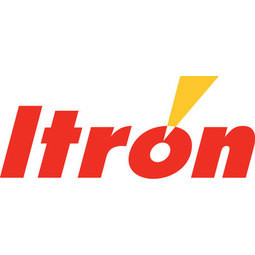Download PDF
Horizon Power's Advanced Metering Network Deployment with Itron

Technology Category
- Networks & Connectivity - NFC
- Sensors - Utility Meters
Applicable Industries
- Electrical Grids
- Telecommunications
Applicable Functions
- Sales & Marketing
Use Cases
- Advanced Metering Infrastructure
- Water Utility Management
Services
- Hardware Design & Engineering Services
The Challenge
Horizon Power, a government-owned utility company in Western Australia, was faced with a significant challenge when the traditional card-based prepayment meters they had been using to assist customers in remote communities manage their electricity costs stopped being manufactured. This was a critical issue as the utility company serves 100,000 residents and 10,000 businesses spread across a vast service territory of approximately 888,000 square miles. Additionally, Horizon Power had to adapt to a revised regulatory code of conduct for the supply of electricity to residential customers. The new regulations included restrictions on disconnection hours and a requirement to supply customers with data on their total energy consumption, as well as their average daily consumption and charges for the previous two years.
The Customer
Horizon Power
About The Customer
Horizon Power is a vertically integrated government-owned utility serving 100,000 residents and 10,000 businesses in regional and remote parts of Western Australia. The utility has 47,000 customer connections spread across a vast service territory that spans 2.3 million square kilometres (approximately 888,000 square miles). The customers are a mix of residential and business entities, with a significant number of them residing in remote, rural communities. These customers have traditionally relied on card-based prepayment meters to manage their electricity costs and avoid accumulating debts.
The Solution
To address these challenges, Horizon Power selected Itron to deploy a multi-application, IPv6 network platform for an Advanced Metering Infrastructure (AMI) program. This made Horizon Power the first distribution utility in Australia to pursue a non-mandated AMI deployment and a customer pre-payment program. Horizon Power also chose SmartGridCIS, a US-based company specializing in smart prepaid billing solutions, to provide all the functionality needed to manage the prepayment customers’ accounts. Horizon Power worked closely with the meter supplier Landis+Gyr to develop new meter firmware to provide the required prepayment functionality. The firmware allows Horizon Power to send commands to the meter to display the customer’s balance, and several other messages such as a low credit warnings and disconnection. The firmware also provides the capability for Horizon Power to convert the meter from prepayment to post-payment billing over the Itron meter network, eliminating the need for physical visits to reprogram the meter.
Operational Impact
Quantitative Benefit
Related Case Studies.

Case Study
Hydro One Leads the Way In Smart Meter Development
In 2010, Ontario’s energy board mandated that time-of-use (TOU) pricing for consumers be available for all consumers on a regulated price plan. To meet this requirement, Hydro One needed to quickly deploy a smart meter and intelligent communications network solution to meet the provincial government’s requirement at a low cost. The network needed to cover Hydro One’s expansive service territory, which has a land mass twice the size of Texas, and its customers live in a mix of urban, rural, and remote areas, some places only accessible by air, rail, boat or snowmobile. Most importantly, the network needed to enable future enterprise-wide business efficiencies, modernization of distribution infrastructure and enhanced customer service. To meet these needs, Hydro One conceptualized an end-to-end solution leveraging open standards and Internet Protocols (IP) at all communication levels. The utility drew upon industry leaders like Trilliant to realize this vision.

Case Study
Selling more with Whirlpool
Whirlpool wanted to add connectivity to appliances and transform the company's relationship with customers. Traditionally, Whirlpool interaction with customers was limited to purchases made once every ten years. Connected washer and dryers provide exciting new features like remote management of start times and inter-machine communication.

Case Study
SAS® Analytics for IoT: Smart Grid
Companies face falling revenues, rising infrastructure costs, and increasing risk of outages caused by inconsistent energy production from renewable sources. Less money is coming in as more people and organizations take steps to curb their energy use. Utilities are paying more to maintain and build infrastructure due to increasing complexity, resulting from the rising number of intermittent and variable renewable energy sources connected in the distribution grid.

Case Study
Enel Secures Italian Power Generation Network
Electric energy operators around the world are working to increase the reliability and cyber resiliency of their systems. This includes Enel, a global power company that manages and monitors the Italian power grid. This grid:• Serves 31 million customers• Has a net installed energy capacity exceeding 31 gigawatts• Includes more than 500 power generation plants,including hydroelectric, thermoelectric, and wind• Is managed and monitored by Enel 24/7/365• Is operated by Terna, the Italian Transmission System Operator (TSO)Enel is responsible for the availability of the grid’s underlying ICS and industrial network. It also manages Regional Control Centers and Interconnection Centers which connect with the TSO. The TSO manages the flow of energy to the grid plus controls and remotely regulates the power generation of power plants, increasing and decreasing power production as required. The complex system of interaction and cooperation between Enel and the TSO has strong security implications as well as operational and business challenges.

Case Study
Vodafone Hosted On AWS
Vodafone found that traffic for the applications peak during the four-month period when the international cricket season is at its height in Australia. During the 2011/2012 cricket season, 700,000 consumers downloaded the Cricket Live Australia application. Vodafone needed to be able to meet customer demand, but didn’t want to invest in additional resources that would be underutilized during cricket’s off-season.






